21 Epic Landmarks in Utah You Must Visit!
Utah Landmarks: Utah has a lot of beautiful natural landmarks that you really have to see to believe. These Utah Landmarks are absolutely stunning and while some are in National Parks, there are also plenty of beautiful landmarks in Utah outside of National Parks.

Check out my other posts on interesting things in Utah:
15 Best Small Towns in Utah – Charming Places to Visit
15 Best Beaches in Utah – to cool off this summer
25 Best Places to Visit in Utah
15 Best Lakes in Utah to Enjoy This Summer
21 Awesome Landmarks in Utah
Delicate Arch
People come from all over the world to visit Arches National Park, and visiting Delicate Arch is on the top of many visitors’ to-do lists. In a park with over 2,000 stone arches.
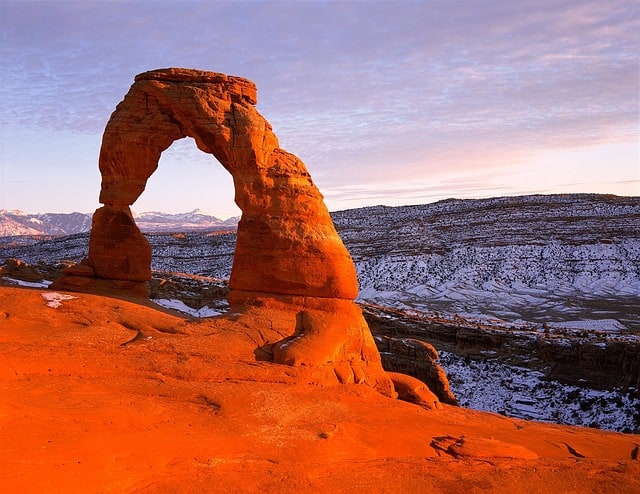
This particular free-standing arch has become a widely recognized symbol of the state of Utah and one of the most famous geologic features in the world. Known as the most delicately chiseled arch in the entire area, this arch has a light opening beneath that is 46 feet high and 32 feet wide, making it the largest free-standing arch in the park.
Visit the Delicate Arch through the spring and fall, the park’s temperature usually reaches 65 to 85 degrees during the day, with nights as much as 30 degrees cooler.
In the summer, daytime temperatures routinely hit 100 degrees, so hikes in the morning and evening are preferable. Be sure to visit this 52-foot tall arch on your next trip; however good pictures maybe, they’ll never do it justice.
Landscape Arch
The hike to Landscape Arch is akin to the trip to Delicate Arch. It’s one of those must-see features of Arches National Park.
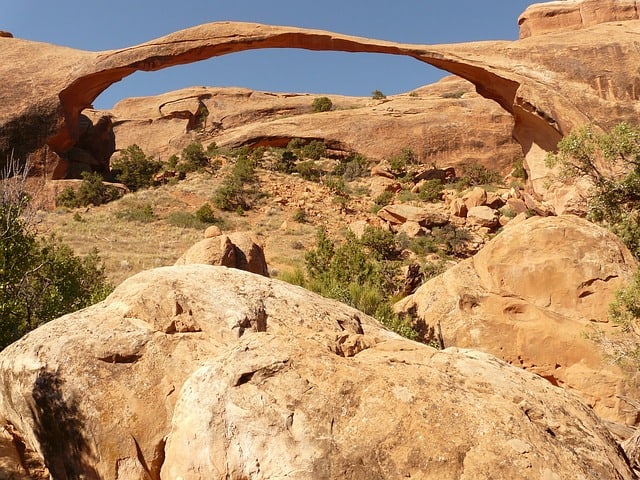
This is an easy trail to hike on—flat and double-wide all the way. Landscape Arch has an opening spanning an incredible 306 feet, which may make it the longest stone span in the world. On the geologic time scale, Landscape Arch is a senior citizen among arches in the park. It’s also famous for the extreme slenderness of its stone span.
And don’t wait too long to see it. Geologically speaking, it’s likely to collapse any day. The mirage-like Landscape Arch looks entirely under-supported.
The arch is so long and so thin, it’s hard to believe it can stand. The arch’s existence would throw the entire notion of gravity into question, were it not for three pieces of the arch that have broken off in the last two decades. Don’t miss this chance to marvel at the incredible Landscape Arch.
Coyote Gulch
Located in the vast Grand Staircase-Escalante desert, Coyote Gulch is a winding, semi-narrow canyon that snakes its way down through incredible red rock country, and joins with the Escalante River just above Lake Powell.

The hike is long, best suited for an overnighter, though it can be hiked in one day by those satisfied with a march instead of casual exploration. Hikers will pass a good number of arches, as well as the hardy wetlands that thrive within the shade and moisture of Utah’s desert oases.
Located in the vast Grand Staircase-Escalante desert, Coyote Gulch is a winding, semi-narrow canyon that snakes its way down through incredible red rock country, and joins with the Escalante River just above Lake Powell.
Hikers will pass a good number of arches, as well as the hardy wetlands that thrive within the shade and moisture of Utah’s desert oases. For hikers seeking an adventure in the remote red rock beauty of Utah, Coyote Gulch is a hard-won, bucket-list destination.
Angel’s Landing
Angels Landing is one of the world’s most renowned hikes and is an unforgettable adventure worthy of all bucket lists.

The stunning views of Zion Canyon’s 270-million-year-old rock layers will time travel you back to the Triassic period when this section of the Colorado Plateau was just a flat basin at sea level. Angels Landing is one of the defacto classic hikes in Zion and one of the most stunning viewpoints you will ever experience.
The trail to its lofty summit was hewn out of its steep, rock-solid spine in 1926 and it continues to thrill hikers to this day.
The hike climbs up roughly 1,500 vertical feet along the narrow fin of stone that reaches a top elevation of 5,790 feet. A chain railing adds an element of safety, but if exposed heights make you weak in the knees, it will take a double-dose of courage to make the summit.
This is one adventure that packs a mountain of excitement into a relatively compact, daring hike. There is no view more dramatic than what you see hanging onto a chain bolted into a cliff, so come to Angels Landing.
The Narrows
The Narrows is the most popular hike in Zion National Park, and one of the world’s best slot canyon hikes. It is pure fun and can be tailored to suit any ability level. The trail is basically the Virgin River.
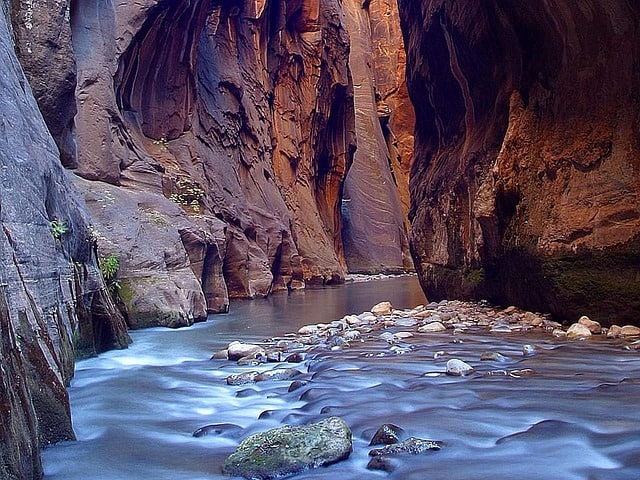
The canyon is so narrow, the river covers the bottom in many spots, which means you have to wade or swim to proceed. Plan on being wet. The cool water makes this hike particularly pleasant during the hot months of summer. It is a beautiful spot where water rolls down the sandstone walls from the canyon above.
Words cannot describe the beauty this trail has to offer. Make sure you give yourself plenty of time to take in the large canyon walls that surround you, the narrow pathway through the river, and the majestic scenery along the way.
The best times to hike The Narrow are in Summer and Fall. Whether you are admiring the beauty of taking on the hike, hiking The Narrows is a life-changing experience.
Golden Cathedral
Do you want to see a place made in heaven? Then the Golden Cathedral is the place for you. Don’t be misled by its name, the Golden Cathedral is THE iconic photo of the Grand Staircase-Escalante area.

This is the place you’ve seen in books, calendars, and posters. It is a stunning natural bridge in the lower Neon Canyon that will take your breath away!
The Golden Cathedral is an incredible sandstone alcove featuring an awe-inspiring triple pothole arch located deep in the wilderness of the Glen Canyon National Recreation Area.
This hike can be done in a day but you can stay for there are other things to do here like camping along the river and wandering up and down the river. Sure it’s about the journey and never the destination but no one will ever complain about ending up in the Golden Cathedral.
Zebra Slot Canyon
To get a taste of Utah’s famed canyoneering opportunities, Zebra Slot provides a nice insight into what’s possible. Zebra Slot Canyon is a very short canyon, named for its striped canyon walls.
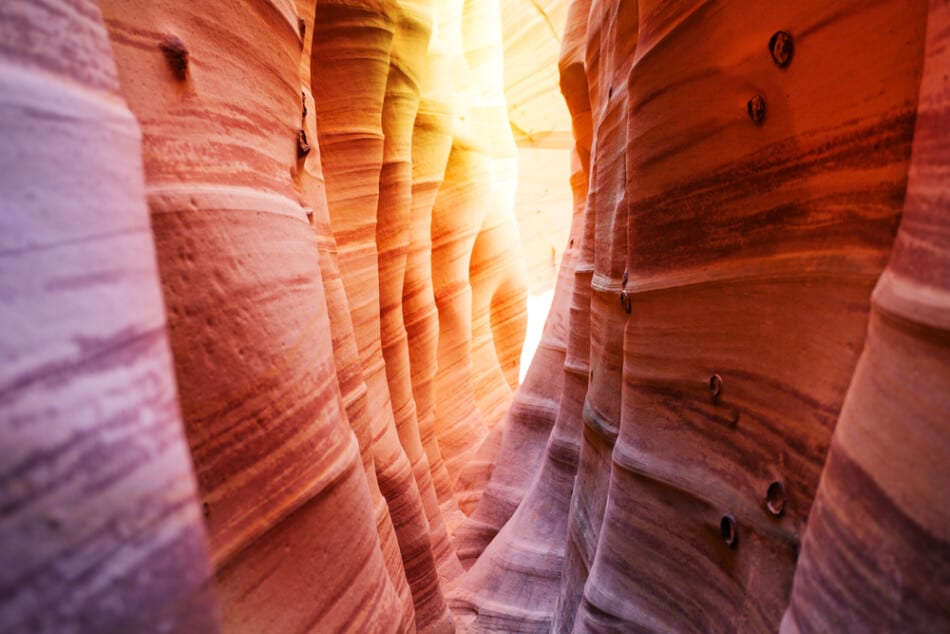
For hikers, this canyon maybe a little easy, but a bit difficult to navigate for those first-timers. Once you reach the canyon, be careful of the “puddles” of water found in the Zebra Slot Canyon.
Sometimes the water is a bit deep that it even requires swimming. The fun has only just begun! The rest of the way up Zebra Canyon gets extremely narrow. It’s so narrow that it’s often impossible to place even a single foot squarely on the bottom. So get ready to move your body to trek this canyon. Zebra Slot Canyon is a stunning and unique out and back canyon, so don’t miss out on this short but adventurous hike.
House on Fire
This place is not a literal house on fire, but the ruins named House on Fire. The House on Fire ruin is located in the South Fork of Mule Canyon near Blanding, Utah.
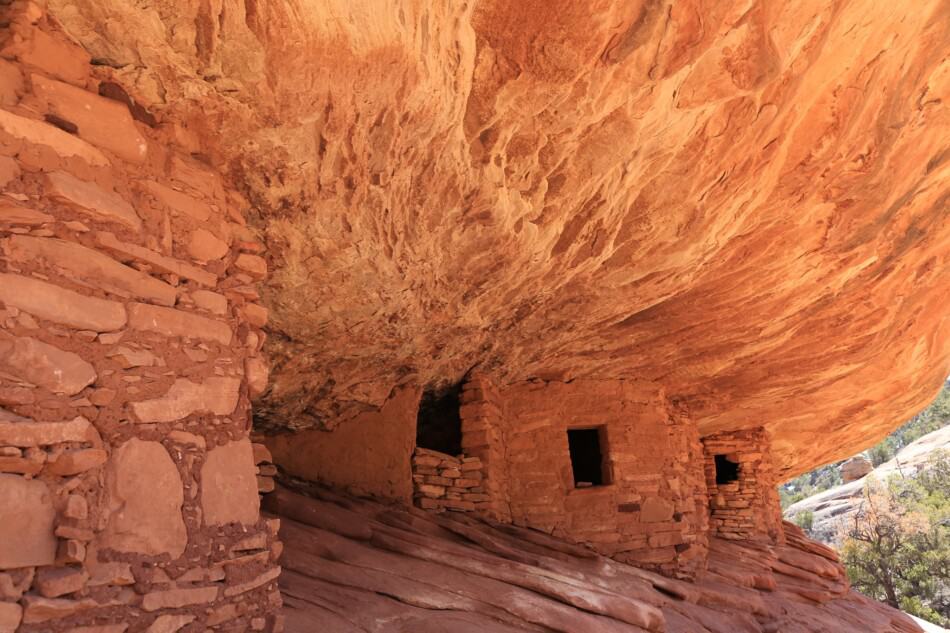
The ruins get their name from the effects that the sunlight has on the sandstone cliff of the alcove that is nestled in. With its close proximity to a paved road, the House on Fire ruin attracts many eager visitors that are able to discover the location of the trailhead.
The House on Fire is a good place to take photos of the times where the sun passes over the cliff, since the light from the sun scatters throughout the shaded alcove and creates the fiery attribute of the ruins its famously known for. When visiting Utah, the House on Fire ruins are the “go-to” ruins for everyone.
Hoodoos in Bryce Canyon National Park
Bryce Canyon receives a lot of snowfall within a year, because of that, the canyon also experiences the freezing and thawing of snow in the canyon. This phenomenon created what is known now as the Hoodoos in Bryce Canyon.

Hoodoos are the kind of rock formations that make people take second and third looks. Many people think that these weirdly shaped rock spires that look like totem poles are made by wind erosion. These mystical shapes inspire fascination and mystery.
This is a great place to take a step back and marvel at the pillars of stone formed by mother nature. The most popular hoodoo in Bryce Canyon is Thor’s Hammer.
It consists of a very tall spire that supports a large rock at the very top. This large rock resembles a hammerhead hence Thor’s hammer was made. This particular hoodoo is a sight to see. The unique nature of these hoodoos makes a trip to Bryce Canyon National Park that much more special.
Mesa Arch Canyonlands
Known for being one of Canyonlands National Park’s most iconic vistas, Mesa Arch is a perfect trail for beginners, families with small children, or even light hikers.
Mesa Arch is a picture-perfect place and it will come as no surprise that it is featured in travel guides, brochures, and postcards. The trail is well marked and partly on Slickrock. As you hike, keep an eye on the edge of the mesa for sneak peeks of the iconic arch.

This arch gives you a unique view of the La Sal Mountains in the distance. This is a good place to take photos of the sunset under the arch. Depending on where you stand, every angle you take a photo the view in the arch changes. So whether you are just visiting or exploring the National Park, Mesa Arch is not to be missed.
Timpanogos Cave
Hike your way past amazing vistas and explore a hidden underground world. Timpanogos Cave National Monument includes an impressive cave system known for its colorfully decorated caverns. It is located in American Fork Canyon, along Utah’s populous Wasatch Front, and so it attracts a large number of visitors every year.
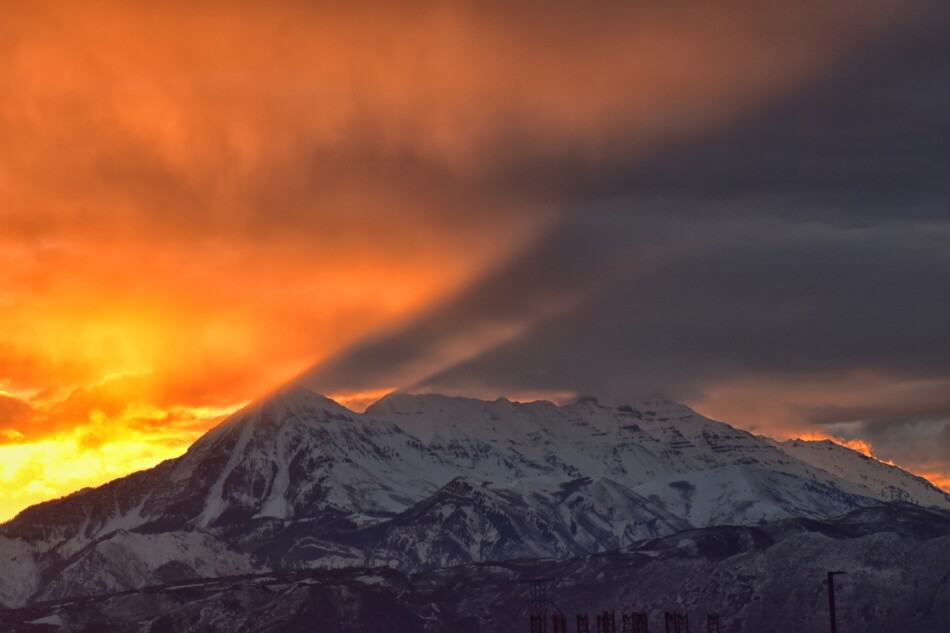
These caves can only be entered with a tour guide to prevent people from getting lost from this fascinating cave system.
Helictites, stalactites, stalagmites, calcite crusts, draperies, and frostwork are just a few of the many dazzling formations found in the chambers of one of the most popular caves in Utah. Don’t miss out on this unique and fascinating underground world that is Timpanogos Cave.
Virgin River
It may come as a surprise, but there is plenty of water in Southern Utah! This river though one of the top adventure sports in the Zion National Park, is also the life force of the desert oasis around it.
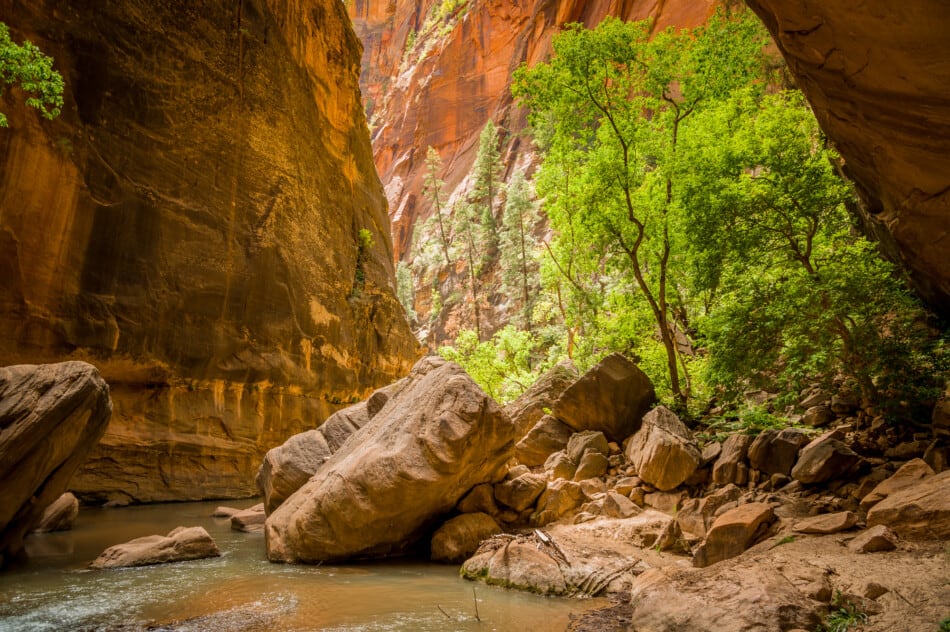
Feeding into Lake Mead, it is one of the strongest carvers of the canyon. While it provides the important task of keeping the local environment alive, it is also a destination for summertime fun.
Families and friends enjoy lounging on the beach just steps from their lodging, and floating down the river is a great way to relax and admire the beautiful natural surroundings of the park. The Virgin River cuts through the red rock landscape, providing the perfect way to cool off.
Bonneville Salt Flats
Imagine a place so flat and white, that you can see the curvature of the earth. This is not a figure of speech, it is Utah’s famous Bonneville Salt flats.
The Bonneville Salt Flats is one of the most unique natural features in Utah, stretching over 30,000 acres. It is located along I-80 near the Utah-Nevada border. It is perfectly flat and has a thick crust of salty soil. From far away it looks like a frozen lakebed covered in snow. As the name suggests, this flat attraction cannot grow anything on it making it very unique.
The most impressive spot to view the Salt Flats is along I-80, about 10 miles east of Wendover. The rest area is surrounded by perfectly flat land that looks like it is covered by snow. To the north and west, low mountains break the view. To the east and south, it looks like flat land extends virtually forever. If you’re going for solitude and the sights, visit the Bonneville Salt Flats, where any time is a good time as long as the flats are dry.
Lake Powell
Don’t let the name fool you, Lake Powell is not a lake but a man-made reservoir in the Colorado River. Lake Powell is located in northern Arizona and stretches up into southern Utah.

With nearly 2000 miles of shoreline, this is a major vacation spot visited by many people every year. Lake Powell’s placid blue water runs right into sandy beaches, adding swimming and boating to the hiking, camping, and sandstone dynamism you’ve come to expect from southern Utah.
It’s been called “America’s lost national park” because the flooded canyons look so much like the federal designations that surround it, meaning travelers get to enjoy the same amber-/tangerine-/red-rock views by boat. It’s the desert without all the dryness. With endless sunshine, warm water, perfect weather, and some of the most spectacular scenery in the west, Lake Powell is a great place to wander and explore.
Hovenweep Castle
On the border between Colorado and Utah lie some of North America’s most ancient and remarkable ruins. Hovenweep Castle is comprised of the ruins of Ancestral Puebloan villages. The home of roughly 2500 people who built an impressive array of structures, including, unusual towers, D-shaped houses, and ceremonial kivas. Hovenweep Castle is a popular destination for photography, not just the towers but the vibrant desert landscape and rich plant and animal life that are present around it. Aside from photography, camping is another thing to do near Hovenweep Castle. There are more than 30 tent and Rv sites which is accessible to the general public. Hovenweep Castle is home to a modern mystery that has stood the test of time and continues to capture the imaginations of visitors from all over the country.
Recent Posts
Discover the Top 19 Unforgettable Day Trips Just Hours from Vegas! Are you looking for day trips from Vegas? Whether you are looking to get away from the strip or are using Vegas as a base...
Vegas Fine Dining: A Tour of 15 Exquisite Upscale Dining Destinations Welcome to the ultimate guide to upscale dining in Las Vegas! Whether you're a seasoned foodie or simply seeking a taste of...
